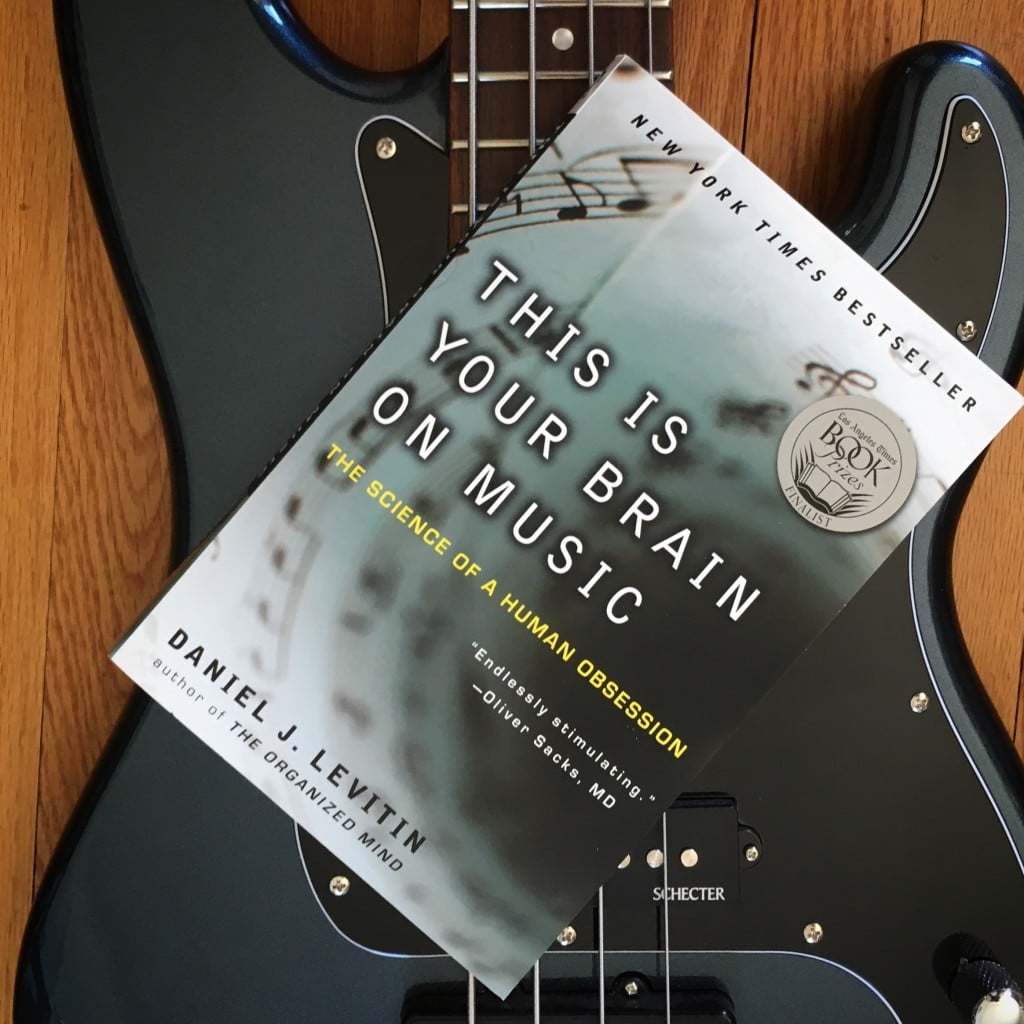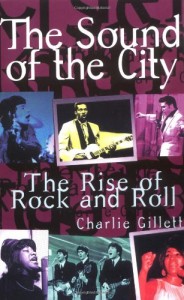
BigSky MX Preset Pack 1
Explore Our First BigSky MX Preset Pack! As part of the latest Nixie 2 update, we’ve put together a free BigSky MX preset pack featuring sounds
Free US Shipping On Orders Over $49
Easy 30-Day Returns
Financing Available Through ![]()

Hello!
Welcome to my Strymon Book Club. I have looked several times for a local book club, but most often the books being read are not things I’m interested in. I wanted to read more music books, and thought you all would be the perfect book club companions. I’m not going to be reviewing books, just discussing, sharing stories, and learning from your insights. Below is the first book I chose: This is Your Brain on Music: The Science of a Human Obsession by Daniel J. Levitin.
Let’s start!
Do you remember that one powerful moment with music that you had as a youth?
Daniel J. Levitin shares in the Introduction:
“I had never before heard the depth that I could hear in the headphones—the placement of instruments both in the left-right field and in the front-back (reverberant) space.”
My moment was: My mother DJ’d parties and had those big Cerwin Vega speakers you could fill a hall with. I had a long dresser. A very long dresser. I would put one speaker on one end and the other speaker on the other end and face them towards each other, and then lie down between them and get enveloped by the music. I imagine that all the audiophiles out there are cringing at the thought of this—probably the worst way to position your speakers! But for me it made me feel like I was part of the music, totally one with it.
If you have a moment please share it below.
This book will have your brain churning as you turn each page. This can feel a bit strange because you become hyperaware of your brain churning as you read more and more about how our brains work. What I love most about our brains and about us as humans is that even as you learn more about the brain, you continually get the sense that so much of our mind is not definite, and that there is much more to be discovered, as well as things that will never be discovered.
In Chapter 2, pg.74 Dr. Levitin says:
“Musicians refer to the pleasing-sounding chords and intervals as consonant and the unpleasing ones as dissonant.”
I feel like the majority of you create music that many would consider consonant, which I will admit makes my job wonderful, because I love listening to all the music you share with us.
But I often find the absurd pleasing, whether in humor or music. For me, a piece needs creativity and something that I may have to pause to think about for a bit. When I listen to music that might be considered dissonant, I am either connecting with the song or I’m fascinated by the artist’s mind. It can feel a bit like a mystery, an unusual journey, or a mind-opening experience. The best example I can provide is “Hamburger Lady” by Throbbing Gristle. It is mysterious, disturbing, and interesting, and it opened my ears to songs that go their own way.
Do you have a song that you like that many others might find dissonant? Do you know why you like it?
In the Chapter “Behind the Curtain,” Dr. Levitin talks about our sensory perceptions. This chapter made me remember something I’d just found out about a few years ago, which may be common knowledge that I simply hadn’t paid attention to: When you walk toward a Mourning Dove and it takes off, it makes a certain a sound. That sound is created by the vibration of its wings. If you are curious to read up on this, there is a nice article about it here.
On Page 122, Dr. Levitin talks about the grooves of a record. I wanted to include this video here to nerd out on! Enjoy. 🙂
In Chapter 5, Daniel J. Levitin asks the question:
“Can we define music by definitions?”
I love his discussion on genres, because quite often I will listen to what one person might call “alternative” or “indie” and I hear “pop” or “heavy metal.” But if I said so out loud, someone might actually be offended! Genres can be useful for trying to verbally explain something. I used to work at a record label, and no matter how much I tried to avoid doing so, if anyone asked “What kind of music is (band name)?” we would all answer “Well, they are kind of like Beck meets Iggy Pop meets Hüsker Dü.” You couldn’t help but do that, because after you said it, the person would say “ok,” and it would suffice. But as Dr. Levitin points out, with genres, not everyone fits the narrow definitions. Genres can also create a box that a musician may feel stuck in when they have ideas outside of that box.
Do you prefer the definitions of genres? Do you relate to one particular genre?
At the end of Chapter 5, Dr. Levitin discusses memory triggers with music. I’d love for you to share a song that triggers a memory or a time in your life. Of course we all have many, and maybe some that are too special or too painful to share with others. I thought I would choose “Fall at Your Feet” by Crowded House. It is the original that triggers the memory for me, but below I have embedded Boy and Bear’s amazing cover of it. My memory is of being at a musician friend’s house, with everyone sitting around in the studio. As always would happen, a jam session began, and the first song someone decided to play was “Fall at Your Feet.” At the time, which was in 1999, this was one of my favorite songs (it still is), and being in a room full of friends playing the song was a very moving experience. And just as Dr. Levitin writes in his discussion of music as a memory trigger, when I hear this song, I can picture the room, the chair I’m sitting in, the lighting, and the darkness outside.
There is so much to cover in this book, and I hope you all will bring up many things that I haven’t touched on. One thing I would love to hear from you about is the topic of different cultures and music. I have seen on your Instagram posts that many of you have traveled around the world, and that some of you have searched out music from other cultures to grow and learn from. We are lucky now, thanks to the internet, to be able to get a taste of music that radio would have never played back in the day.
When I reached the end of the book, I had the thought that it would be so nice to listen to all the songs that had been mentioned. Of course the internet does not disappoint! Someone out there has put together a Spotify playlist. 😃 Thank you internet friends!
I’d like to end with this from Chapter 2. Daniel J. Levitin writes:
“…Rollins improvised for three and a half minutes by playing the same one note over and over again with different rhythms and subtle changes in timing. All that power in one note!”
When I read that, I instantly thought of a few of our Strymon online friends who have posted videos of playing one note and then tweaking pedals to make an interesting song. Below are Byrn D. Paul, Ryan Lutton, and Nathan Shafer (aka echoechoguy), making one note videos. Hopefully they both inspire you to make and share a one note video. We’d love to see it. Check them out below.
Thanks everyone for sharing in the discussion. If you came to this blog and haven’t read This is Your Brain on Music, pick it up and join us back here. I’ll still be happy to discuss.
 The next book is one I tracked down from a list of 100 books that David Bowie considered must-reads. It is The Sound of the City: The Rise of Rock and Roll by Charlie Gillett. This is a big book, so let’s plan on discussing in a few months, around the end of July.
The next book is one I tracked down from a list of 100 books that David Bowie considered must-reads. It is The Sound of the City: The Rise of Rock and Roll by Charlie Gillett. This is a big book, so let’s plan on discussing in a few months, around the end of July.
I’ve already got some other great book suggestions from a couple of you. If you have others, please post them below and I’ll make note of them.
Subscribe to our newsletter to be the first to hear about new Strymon products, artist features, and behind the scenes content!

Explore Our First BigSky MX Preset Pack! As part of the latest Nixie 2 update, we’ve put together a free BigSky MX preset pack featuring sounds

If you happen to be one of those Strymon owners who know that their favorite units might have some extra capabilities but can’t remember exactly

From our favorite artists’ new releases to amazing concerts, and existing artists we’re just finding out about, 2024 was a year filled with great music.
6 Responses
This is a great read. All the hard work we do learning music pays off dividends throughout life. Keep practicing!
That is so true! Whether it be for the musician individually and/or for the musicians creations to inspire others, it is super rewarding. Thanks for sharing this thought. 😀
I just ordered and downloaded the kindle version of the book! Thanks for the great article. I love “Hamburger Lady.” If I were to suggest my favorite dissonant song, it might be “Titanium Expose” by Sonic Youth. Probably not a great example because it has a hell of a hook. My suggestion for the next read would be “How Music Works” by David Byrne. It looks at music culturally, psychologically, and spends a good deal of time discussing how recording has changed our relationship to music. I am probably not doing justice to the book, but it was a fascinating read. looking forward to this one for sure.
I haven’t listened to “Titanium Expose” for over 10 years. Now I’m going to be listening to Goo all day! Love it 🙂 I had “How Music Works” on my long list of books to read, so I’m moving that to the top. Can’t wait to hear your thoughts on “This is Your Brain on Music”
Yes it is a great book, but if you want to go deeper and really see the powerful effects that music can have on rehabilitating, and rewiring, damaged, diseased and injured brains, then I would strongly recommend going deeper with
These two books:
The Handbook of Neurologic Music Therapy
Rhythm, Music, and the Brain.
Both by Dr. Michael Thaut.
I am a music -psychotherapist and neurologic music therapist, working a lot with people recovering from severe brain -injury. Music really can retrain and rewire the neurologic system. It really is amazing.
Excellent suggestions. Thank you so much. I’ve added them to my book list. It is so wonderful how powerful music is for us. Can’t wait to read more about it 😀